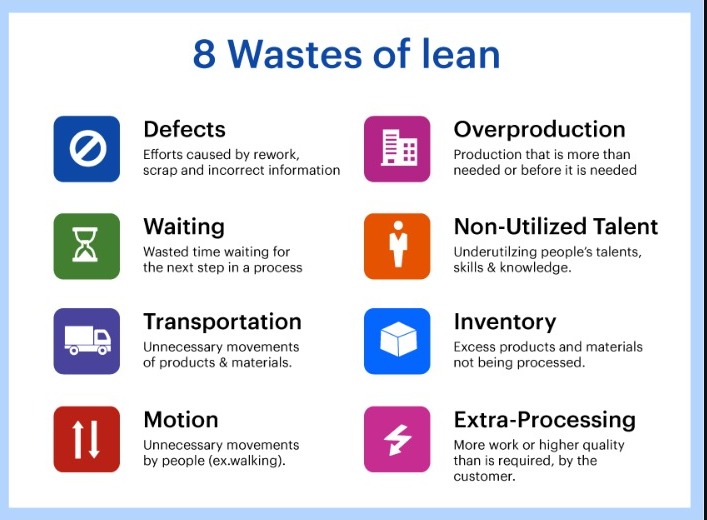Improving process performance is a goal shared by many, but achieving it requires the identification and elimination of inefficiencies and waste that impact quality, cost, and delivery. Lean Six Sigma principles guide us towards maximizing value and minimizing variation, and one of the most effective tools for this mission is the 8 wastes framework. In this article, you’ll delve into the world of these 8 wastes, learn how to spot them within your process, and discover practical strategies to reduce or eliminate them.What are the 8 Wastes?The 8 wastes encompass non-value-added activities that devour resources, time, and effort without benefiting the customer or the process. DOWNTIME is the acronym to remember, where each letter represents a different type of waste:
- D: Defects: Errors or mistakes stemming from poor quality or specifications.
- O: Overproduction: The production of more than required or ahead of schedule.
- W: Waiting: Idle time or delays between steps or resources.
- N: Non-utilized talent: Failing to make use of the skills, ideas, or potential of individuals.
- T: Transportation: The unnecessary or inefficient movement of materials, products, or information.
- I: Inventory: Excess stock or supplies consuming space and capital.
- M: Motion: Unnecessary or excessive movement of people, equipment, or tools.
- E: Extra-processing: Doing more work than necessary or adding non-valued features.


